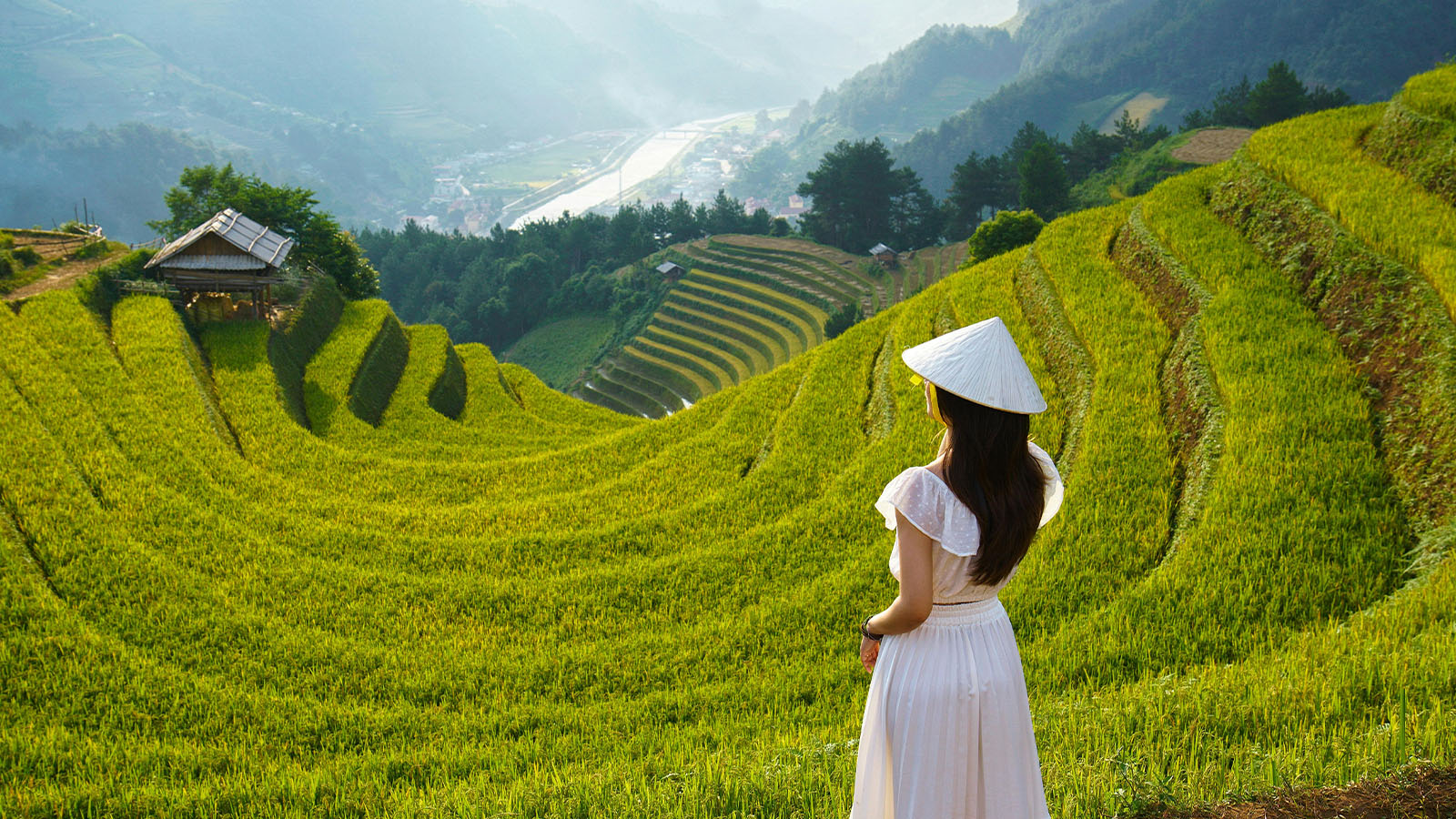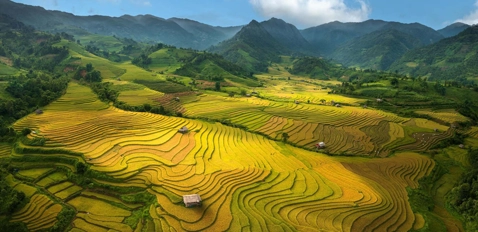How to Say Hello And Thank You in Vietnamese
Vietnamese may seem difficult at first glance, especially for travelers unfamiliar with tonal languages. With six different tones, a single word can have multiple meanings depending on pronunciation. However, Vietnamese people are warm and welcoming, and they always appreciate it when visitors try to speak their language, even if it's just a few simple words. A friendly “hello” or a sincere “thank you” can go a long way in making connections and showing respect.
In this guide, you’ll learn how to say hello and thank you in Vietnamese, as well as the different ways to greet people based on age and relationships. You’ll also discover how to express gratitude politely and pick up some essential phrases to make your trip more enjoyable.
Understanding the Vietnamese Language
Before you learn how to pronounce "hello" and "thank you" in Vietnamese, it’s useful to first understand how the language works. With a 29-letter alphabet, Vietnamese is a fascinating and unique language that might feel very different from what you are used to. Unlike English and many Western languages, Vietnamese is a tonal language, meaning the way you pronounce a word can completely change its meaning. This can make learning a bit challenging at first, but with a little practice, you will get the hang of it.
The Difference Between Vietnamese and Foreign Languages
One of the biggest differences between Vietnamese and many foreign languages is its tonal system. In English, for example, you can change your tone to express emotions, but in Vietnamese, the tone actually determines the meaning of the word. For example, the word "ma" can mean "ghost," "but," "cheek," "grave," "horse," or "rice seedling," depending on how you pronounce it.
Another key difference is that Vietnamese does not use verb conjugations. In languages like English, French, or Spanish, verbs change based on the tense and subject. In Vietnamese, the verb stays the same, and you simply add time indicators like "yesterday," "today," or "tomorrow" to make the sentence clear. This makes the language quite logical once you get past the pronunciation challenges.
Vietnamese Tones Explained
Vietnamese has six tones, and each one changes the meaning of a word. The best way to understand them is to listen to native speakers and practice with a local or a teacher. Here’s a quick overview:
Flat tone (no accent)—Your voice stays flat, like when you calmly say "no" in English.
Rising tone (´ accent)—Your voice goes up, similar to how you would ask a question in English.
Falling tone (` accent)—Your voice goes down, making the word sound a bit sad or tired.
Questioning tone (? accent but without the dot) – Your voice dips slightly and then rises, like when you are unsure about something.
Heavy tone (accent) – This tone sounds short and strong, almost like a sharp stop.
Curved tone (~ accent)—This one is tricky because your voice rises and then falls slightly, making it sound almost wavy.
Let’s go back to the example we’ve mentioned earlier with the word “ma”:
Flat tone (no accent) – ma (ghost)
Rising tone (´ accent) – má (“cheek”, or Southern slang for “mother”)
Falling tone (` accent) – mà (but)
Questioning tone (? accent but without the dot) – mả (grave)
Heavy tone (. accent) – mạ (rice seeding)
Curved tone (~ accent) – mã (Sino-Vietnamese for “horse”)
For many foreigners, these tones can be confusing at first. But don’t worry if you make mistakes. Vietnamese people appreciate it when you try to speak their language, even if your pronunciation isn’t perfect. The more you listen and practice, the easier it becomes.
How to Say Hello And Thank You in Vietnamese
The most common way to say hello in Vietnamese is "Xin chào" (pronounced: seen chow). This phrase is polite and can be used in most situations, especially with strangers or when you are unsure how to address someone. However, native Vietnamese speakers don’t usually greet each other with "xin chào" in everyday conversations. Instead, they often address people directly based on age and relationship.
To express thank you, say "Cảm ơn" (pronounced: gahm uhn). This phrase is used in all situations, but if you want to sound more natural and polite, you should add a personal pronoun based on whom you are speaking to. For example:
"Cảm ơn anh" (to an older male)
"Cảm ơn chị" (to an older female)
"Cảm ơn em" (to someone younger)
"Cảm ơn bạn" (to someone your age)
Adding the correct pronoun makes your Vietnamese sound much more respectful and natural.
How to Say Hello Respectfully in Vietnamese
In Vietnam, greetings are often based on age and social hierarchy rather than just a simple "hello." When greeting someone, you should use the correct pronoun instead of just saying "xin chào." It is also important to use the word “ạ” at the end of sentences to express respect to a person who’s older than you.
To someone a few years older than you, use “Em” to address yourself, and “Anh (male) or Chị (female) to address the other person. Say "Em chào anh ạ" (for a man) or "Em chào chị ạ" (for a woman).
To someone younger: Say "Chào em."
To elderly people, address yourself using “Cháu” or “Con” (slightly more intimate): Use "Cháu chào bác ạ" (for an older man or woman) or "Cháu chào ông/bà ạ" (for a grandfather or grandmother).
To friends or people of the same age: A simple "Chào bạn" works, though close friends often just say “hello” in English or greet each other casually without a formal phrase.
If you are greeting a group, you can say "Chào mọi người" (Hello, everyone).
In Vietnamese culture, a handshake and a slight nod are common for greetings, especially in formal or business settings. However, when greeting elders, it’s more respectful to slightly bow your head.
How to Say Thank You Politely in Vietnam
Just like greetings, saying "thank you" politely in Vietnamese depends on whom you are speaking to. The most common way is "Cảm ơn," but you can make it more polite by adding the proper pronoun.
For example:
- "Cảm ơn bác" or "Con cảm ơn bác ạ." (to an older person)
- "Cảm ơn cô/thầy ạ." (to a teacher)
- "Cảm ơn ông/bà" or "Con cảm ơn ông/bà ạ." (to an elderly person)
- If you want to thank them extra much, you can say "Cảm ơn nhiều" (Thank you very much), with the according pronouns.
Vietnamese people appreciate politeness, so adding the correct pronouns makes your "thank you" feel warmer and more respectful.
Important Words and Phrases to Learn Before Traveling to Vietnam
Basic Phrases
These are the most common words and expressions you’ll use daily in Vietnam.
- Hello – Xin chào (seen chow)
- Goodbye – Tạm biệt (tam byet)
- Yes – Vâng / Dạ (vuhng / yah) (More common in the north: Vâng; in the south: Dạ)
- No – Không (khom)
- Thank you—Cảm ơn (gahm uhn)
- You're welcome—Không có gì (khom kaw zee)
- Excuse me / Sorry – Xin lỗi (seen loy)
- Please – Làm ơn (lam uhn)
- I don’t understand – Tôi không hiểu (toy khom hee-yu)
- Do you speak English? –Bạn có nói tiếng Anh không? (ban kaw noy tee-ung ang khom?)
Numbers in Vietnamese
Numbers are useful for bargaining, shopping, and ordering food.
- One – Một (moht)
- Two – Hai (hai)
- Three – Ba (ba)
- Four – Bốn (bohn)
- Five – Năm (nahm)
- Six – Sáu (sow)
- Seven – Bảy (bye)
- Eight – Tám (tam)
- Nine – Chín (cheen)
- Ten – Mười (muoi)
If you need to ask for the price, say:
How much is this? – Cái này bao nhiêu tiền? (kai nai bao nyew tee-en?)
Ordering Food and Drinks
Eating out in Vietnam is one of the best experiences, so knowing some food-related phrases will be helpful.
- I want to order… – Tôi muốn gọi… (toy muon goi…)
- I don’t eat meat – Tôi không ăn thịt (toy khom an teet)
- No spicy – Không cay (khom kai)
- A bowl of pho, please – Cho xin một bát phở (Cho sihn moht baht fuh)
- The bill, please – Tính tiền giúp tôi (ting tee-en yoop toy)
- Delicious! – Ngon quá! (ngawn wa!)
For drinks:
- Coffee with milk – Cà phê sữa (ka feh sua)
- Iced black coffee – Cà phê đen đá (ka feh den da)
- Bottled water – Nước suối (nuek su-oy)
- Beer – Bia (bee-ah)
Shopping and Bargaining
These will come in handy when you’re out shopping, maybe even bargaining.
- How much is this? – Cái này bao nhiêu tiền? (kai nai bao nyew tee-en?)
- Can you lower the price? – Giảm giá được không? (zam zah duke khom?)
- Too expensive! – Đắt quá! (dat wa!)
- I’ll take it – Tôi lấy cái này (toy lay kai nai)
- I’m just looking—Tôi chỉ xem thôi (toy chee sem toy)
Directions and Transportation
If you’re getting around Vietnam, these phrases can be useful.
- Where is…? – … ở đâu? (… uh, how?)
- Hotel – Khách sạn (khak san)
- Airport – Sân bay (sun bai)
- Bus station – Bến xe buýt (ben seh beet)
- Train station – Ga tàu (gah tao)
- How do I get to…? – Làm thế nào để đi đến…? (lam teh nao day dee den…?)
- Turn left / right – Rẽ trái / Rẽ phải (reh chai / reh fai)
- Stop here, please – Dừng ở đây, làm ơn (zung uh day, lam uhn)
Emergencies
Hopefully, you won’t need these, but just in case:
- Help! – Cứu tôi! (koo toy!)
- Call the police! – Gọi công an! (goy kong an!)
- I need a doctor – Tôi cần bác sĩ (toy kun bak see)
- I am lost—Tôi bị lạc (toy bee lak)
- Be careful! – Cẩn thận! (kun than!)
Final Words
Learning how to say hello and thank you in Vietnamese is a small effort that can make a big difference during your trip. Locals will appreciate your attempt, even if your pronunciation isn’t perfect. Practice makes perfect!
If you’re planning a trip to Vietnam, let us help you explore the country’s beautiful landscapes, rich culture, and delicious food. Book a tour with Vietnam Original Travel for an unforgettable journey, and we’ll make sure you have the best experience possible. Chúc bạn may mắn! (Good luck!)
Send us your comments about : How to Say Hello And Thank You in Vietnamese
Required fields *
You might also be interested
Travel ideas
Need some inspiration? Discover some of the best tours in Vietnam, which are highly appreciated by our clients. An excellent starting point to help you choose the right trip to Vietnam, Laos, Cambodia, Burma or Thailand, whether you are traveling alone, as a couple, as a family or with friends.
And because this trip is yours, feel free to customize it as you wish!
Vietnam Cambodia Itinerary 14 Days
Hanoi – Hoa Binh – Mai Chau – Ninh Binh – Halong bay – Hue - Danang – Hoian – Saigon – Ben Tre - Can Tho – Saigon - Siem Reap Angkor - Tonlé Sap - Siem Reap – Ta Prohm - Departure
Vietnam 14 Day Itinerary
Vietnam 14-day itinerary covers the country’s top highlights and quintessential experiences for an unforgettable journey.
Honeymoon Tour Pakcages In Vietnam 12 Days
Saigon Arrival - City Tour – Mekong Delta – Danang – Hoian - by flight - Da Nang – Hanoi - by flight – Halong - overnight on junk – Departure
Authentic Hoang Su Phi Trekking Tours
Hoang Su Phi trekking tours take you to stunning terraces, meet few tourists, connect with locals and enjoy authentic culture.
Best Nha Trang Beach Tour 4 Days
Saigon/Hanoi – Nha Trang relaxation – Saigon/Hanoi – Departure
Mekong Delta Bike Tour Itinerary 7 Days
Cycle through the Mekong Delta in 7 days, discovering floating markets, orchards, craft villages, and tranquil green islands.
Are you interested in this tour?



























Comment